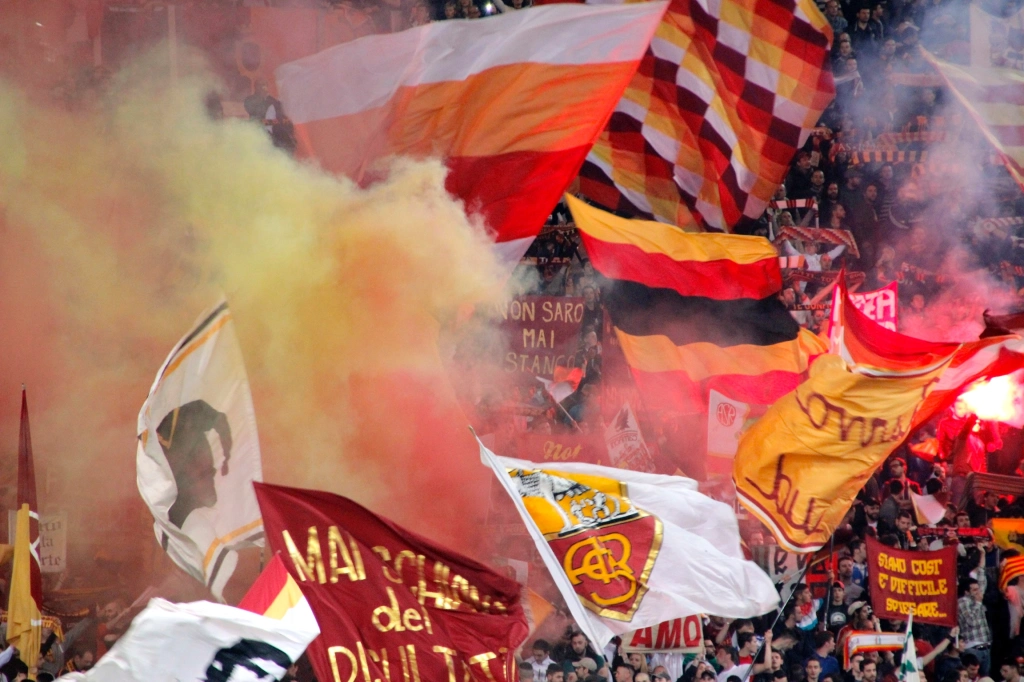Stadium: Stadio Olimpico, capacity 72,698
This stadium is Rome’s second Coliseum, but this one is active. Since its construction in 1910 it has held all manner of events, from fascist rallies and the Olympic Games to World Cup finals. It has seen all of the emotion known to mankind: love, passion, competition and hatred.Many will remember the early 1990s, when James Richardson often presented Football Italia from inside the stadium. Whether on a frosty Sunday morning, a sunny afternoon in April or a Derby match under the lights, this stadium holds a place in the hearts of many people for providing nostalgia and drama.
It is home to arguably the fiercest rivalry in world football and one of the most passionate derby games on the planet, the Rome derby. The stadium itself has had many facelifts, most notably in 1960 when it was transformed to host the Olympic Games, and again in 1990 when the stadium was almost entirely rebuilt for the World Cup finals.
In 2008 the stadium was modernised to bring it up to Uefa’s elite standards. This makes the venue perfect for the explosive Derby della Capitale in which Roma and Lazio fight it out for the pride of the city. Winning the derby can be more important than winning the Scudetto for some fans.
The derby involves fireworks, choreographed flag and banner displays and an intense level of noise. It has also been the scene of violence, racism and extreme ultra groups, such as Lazio’s infamous Irriducibili and the Boys Roma.During the rest of the season, these groups make sure the stadium is still an intimidating place for away teams, but they are constantly struggling against low attendances in their vast arena. At one of the recent low points, the 2010-11 season, Roma averaged an attendance of 33,952 while Lazio only managed an average of 29,122. Things are changing on the Roma side but the Lazio ultras still boycott many games as they contest the way the club is run.
Nobody wants to come and play in Rome. Whether this be down to the intimidating atmosphere, the ultras or that fact that there are no easy games here, the Eternal City has a stadium with an eternal atmosphere.
The Ultras
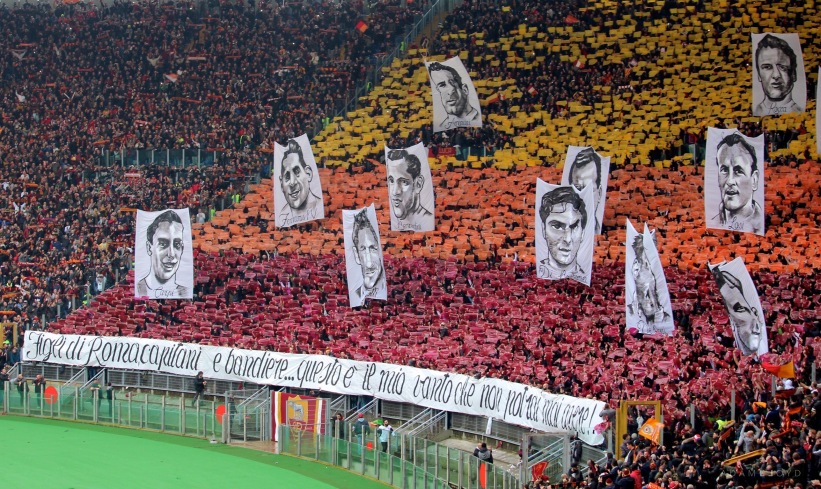
The city they call eternal needs little introduction. Like much of its history, the tale of Rome’s founding is legend; a tale of the twins Romulus and Remus, sons of the Roman god Mars who were abandoned by the River Tiber and raised by wolves. A fraternal feud drove Romulus to kill Remus and build a city in his own honour: Roma. The story is a myth but has become part of folklore. The city’s emblem – the Capitoline Wolf – is a bronze sculpture depicting the twin infants suckling from a she-wolf. The same image can also be found at the heart of AS Roma’s badge and the club’s supporters embrace the symbolism and ancient traditions of the city.Romanisti are vehement in the belief that, far from being just a team from Rome, AS Roma is the team that truly represents the capital. This sentiment largely stems from their aversion towards city rivals S.S. Lazio. “We carry the city’s name, we carry the city’s colours and we carry the city’s symbol,” Federico affirms brusquely. He is, of course, a Romanista, hailing from Rome and studying in Siena. “How could they [S.S. Lazio] reject the city’s colours back in 1900. It’s shameful,” he pauses before delivering his conclusion: “Burini!”
Burini, perhaps best translated as “peasant”, is a term used by Romanisiti to belittle Lazio fans, suggesting they are simpletons who hail from the agricultural regions outside the city’s confines. While Federico admitted his trips to the Stadio Olimpico were sporadic, this had clearly done little to diminish his antipathy towards Lazio. His disparaging words are symptomatic of one of football’s fiercest rivalries, but they also capture the identity and history of AS Roma and its supporters.
In the 1920s, no fewer than eight football clubs represented Italy’s capital. This superfluity meant they were unable to compete with the dominant clubs of northern Italy. Unhappy with this disparity, a representative of the National Fascist Party (Italo Foschi) organised the merger of three clubs: Alba, Fortitudo and Roman and on 22 July 1927, AS Roma was born.
The only major club to resist this merger was Lazio and despite the fact the Aquile had been founded 27 years earlier, the Romanisti immediately considered their team as the peoples’ club. Why? Then, as now, there were more Roma fans, having absorbed supporters from three different clubs. In their early years, the club also settled in the heart of working-class Rome, playing their matches in the Testaccio neighbourhood. But a crucial part of the answer also lies in an issue touched on by Federico: how could Rome’s first club, Lazio, have neglected the chance to adopt the city’s colours and emblem. It’s a decision that bewilders locals and one that may have pushed many working-class Romans towards AS Roma.
The Lupi (wolves) are one of the best supported teams in Italy and a plethora of ultra groups have monopolised the curve. Their stronghold has always been the Curva Sud but some groups, marginalised for their extremity, have also occupied the Curva Nord, traditionally the domain of Lazio’s ultras. In the late 1960s and early 1970s, the Curva Sud had a multifaceted look. Groups were formed according to neighbourhoods and names were often inspired by military heroism such as Arditi (Daring Ones), a unit of elite soldiers the first world war, and Guerrieri della Curva Sud (Warriors of the South Bend).However, in 1977 this lack of homogeneity prompted three groups to merge: Fedayn, Pantere (Panthers) and Fossa dei Lupi (The Wolf’s Den), who collectively became known as the Commando Ultras Curva Sud (CUCS). The CUCS announced their arrival during a fixture against Sampdoria, unveiling a 42-metre banner, the longest ever seen at that time. The amalgam breathed new life into Roma’s support and other groups quickly rallied under the CUCS name. “Heart in the south, metal bars in the north,” was adopted as one of the group’s mottos, a reference to their rivalry with Laziali. Their impressive choreographies, high numbers and willingness to go “behind enemy lines” earned them notoriety across the peninsula, but their obstinate nature would also contribute to their demise a decade later.
In 1987 the Roma president, Dino Viola, sold team captain Carlo Ancelotti to AC Milan and replaced him with former Lazio player, Lionello Manfredonia. Manfredonia was despised for insulting the Roma fans during a derby game. His arrival caused a schism between CUCS members, some of whom were willing to forget the insult and some of whom were not. This saw the birth of the splinter group CUCS-GAM (Group Against Manfredonia) whose focused on honouring the city and its imperious past. “Roma e Gloria” (“Rome and Glory”) became their slogan and it was around this period that the political ideology on the Curva Sudshifted drastically.
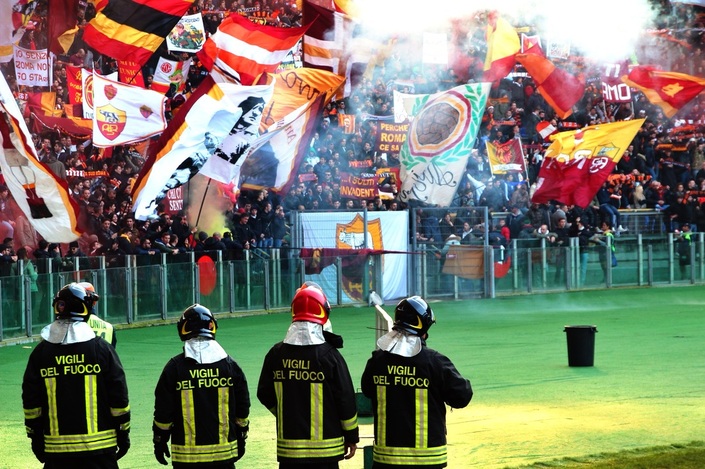
It is important to note that Roma’s hardcore support have traditionally been associated with left-wing politics. Fedayn were overtly communist and their leader Roberto Rulli a renowned idealist, while CUCS also had left-wing sympathies. However, the Italian capital and right-wing politics, namely fascism, have a longstanding history. The word’s etymology is traced back to ancient Rome; a fascis was a rod of birch carried by Lictos (comparable to a police force). Individual fascis were used for disciplinary purposes, but, when tied together they became physically stronger but also a symbol of power. Rome underwent something of a renaissance during Benito Mussolini’s rule, becoming one of the hubs of the fascist regime. Reminders of this period remain scattered across the city, exemplified by the imposing Obelisk emblazoned with Mussolini’s name, dominating the landscape of the Stadio Olimpico.The book Football, Fascism and Fandom by Alberto Testa and Gary Armstrong provides crucial insight. It explores the relationship between fascism and football support in Rome, following two ultras groups, the Irriducibili of SS Lazio and the Boys of AS Roma. Formed in 1972, the Boys were originally on the periphery due to their neo-fascist ideology. However as the CUCS’s influence dwindled, the Boys rose to prominence along with like-minded groups such as Opposta Fazione(Opposite Faction).
As Testa and Armstrong state: “From the late 1980s … political ideology became more evident among the hardcore AS Roma supporters, an important step in the emergence of the first true ultras.” The academics differentiate the Boys Roma and other groups such as Irriducibili and Internazionale’s Boys-San because their right-wing political ideology is at the nexus of their existence. “Right from the start, [Boys Roma] displayed a neo-fascist ideology in the language, actions and methods of support for their team.” This identity manifests inside and out the stadium and thus the authors coined the term “UltraS”.
Violence is also part of this extreme ideology and, unfortunately, AS Roma ultras have been involved in some particularly abhorrent incidents. During the infamous Derby della Capitale of 2004, Romanisti entered the pitch and had the game abandoned after false rumours were spread that a young boy had been killed by police. This year’s Coppa Italia final in Rome – a game in which AS Roma were not involved – was also marred by violence after Roma and Napoli ultras clashed resulting in the death of Neapolitan, Ciro Esposito. In some quarters, Rome is known as “Stab City”, due to a host of incidents in which travelling supporters have suffered at the hands of a “knife culture” dating back to Ancient Rome.
Many may argue documenting these contemptible behaviours only serves to give these groups the oxygen of publicity but, as Testa and Armstrong argue, understanding such phenomena can help create solutions. It is also important to remember that these elements are not representative of the club’s fanbase as a whole. In fact, Romanisiti are often appreciated as some of the most passionate fans in the world, capable of producing awe-inspiring atmospheres. Despite being starved of genuine success (the club have won just three Serie A titles) in the words of their famous anthem “Roma Roma Roma”, Lupi fans consider the club as their “city’s heart and only true love”.
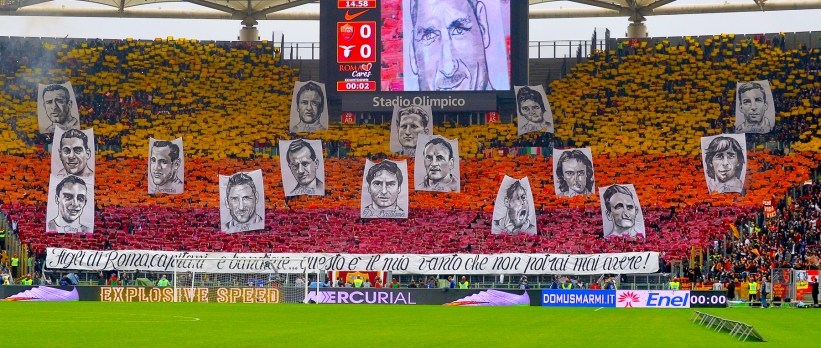
Their relationship with the city’s history makes their story all the more intriguing. Their owner, James Pallotta, plans to solidify this patrimony by financing a new stadium, its design evoking memories of the Colosseum. It will be in this setting that AS Roma’s modern day gladiators do battle. And no one personifies the spirit of the club more than captain Francesco Totti, a man who has dedicated his career to AS Roma during an age of footballing mercantilism. He too, more than anyone appreciates the contribution the Romanisti have made to the club and this year, on his 38th birthday, he made the point of saying a special thank you to the supporters.
On my birthday there are so many people I would like to thank… But I would like to say one special thank you to the heart of AS Roma – to our wonderful supporters. For the motivation they give us, their passion and unconditional love. It’s difficult to find words to describe what this means to me. Then, as now, you have always made me feel special. You are unique and simply fantastic.
Classic Player: Abel Balbo
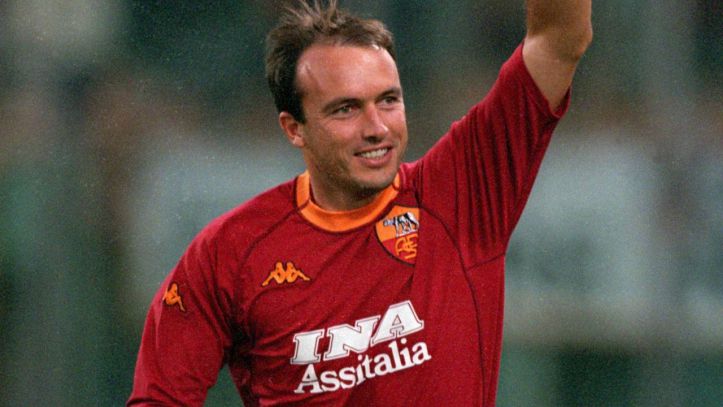
Think of a time before Totti was having an impact and imagine Roma? It feels nearly impossible as the great man’s tenure has been long and great, but there were heroes before. While Totti was breaking through the youth ranks and just entering the first team, a certain Abel Balbo was purchased. He would go on toplay for the Giallorossi with devastating effect, no doubt teaching the club’s bright young things a lesson or two in goalscoring.Balbo’s career started in 1989 with Udinese in Serie B, were he scored 65 goals in 134 appearances between 1989 and 1993. In the 1992-93 season he managed to score 22 times and this turned the heads of Roma. He immediately repaid their faith, scoring 22 times again in the 1993-94 season and becoming one of the most feared strikers in the country. He finished his time in Rome in 1998, a fan’s favourite, after scoring 78 goals in 171 games.
His career wound down after this and he endured less fruitful spells at Parma and Fiorentina before returning to Roma. He played only three games and had no goals to show for it.
Balbo was quite simply a goalscorer: a poacher, a man who would gamble on a defender or a goalkeeper making a mistake. Near-post headers, tap ins, beating the keeper to a ball by inches, this was the way he played this was the way he succeeded.
He could also score spectacular goals. Just ask any member of Parma’s 1993-94 squad (not a bad team by anyone’s standards), who watched in awe as he hammered a 35-yard rocket into the top corner. The ball was hit with such force that it promised to break the net. His movement off the ball was superb. He made sure he was always within a 15-20 yard radius of his partner. His ability to second guess what the other striker would do left him in acres of space to score or (more often than not) beat the defender to the rebound.
Balbo played with some illustrious partners in his time and it is perhaps for this reason that he is not always revered as he should be. Totti, Claudio Caniggia, Marco Delvecchio, Roberto Muzzi, Marco Branca and Daniel Fonseca all played in this period, but from 1993 to 1997, Balbo was the top goalscorer every season.
At this time Serie A was the greatest league in the world by some distance and the Argentinian was helping his Roma side become one of the most potent goalscoring sides in the division. When calcio ruled the world, Balbo was causing the best defences in the world a lot of problems.

